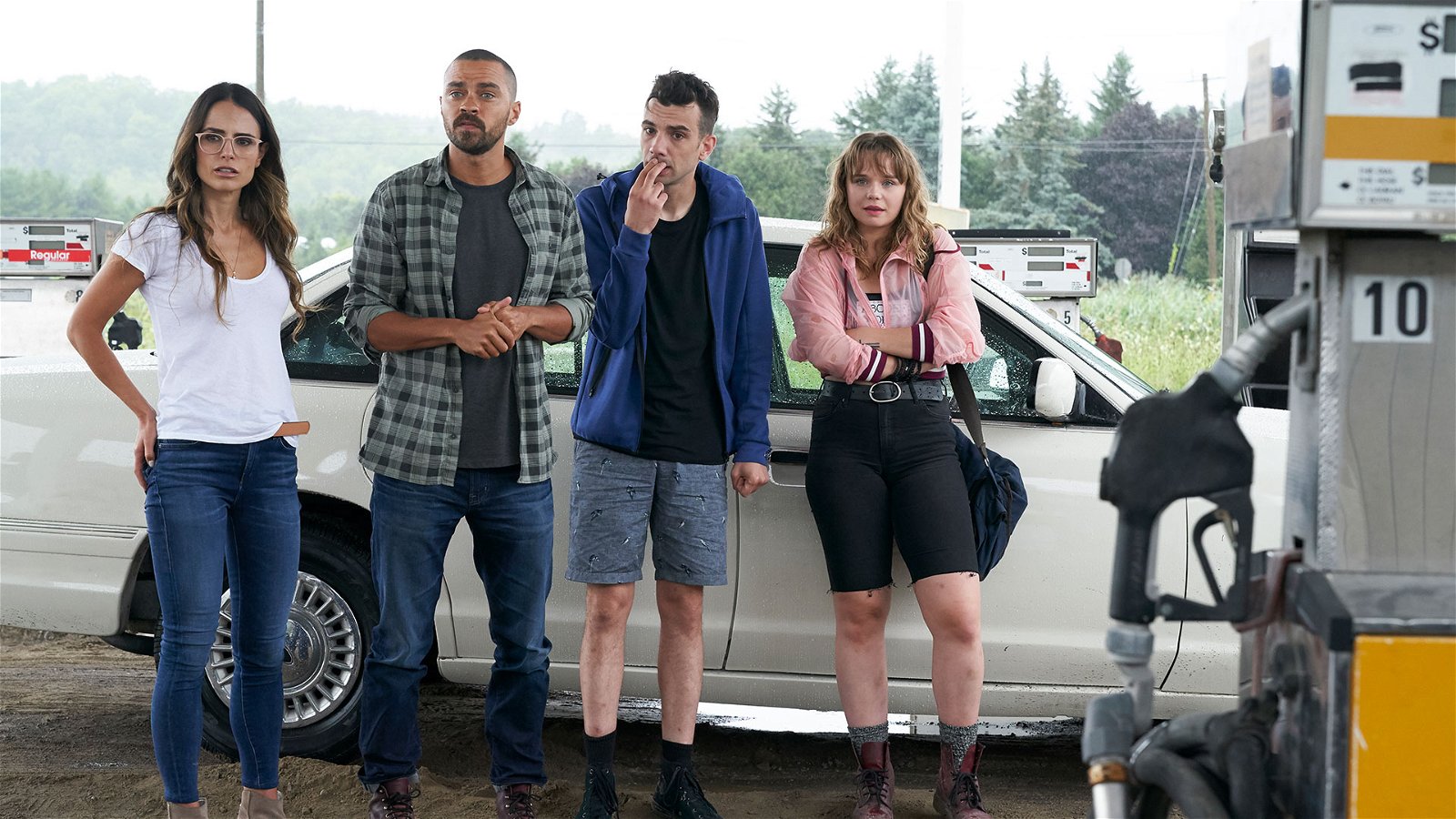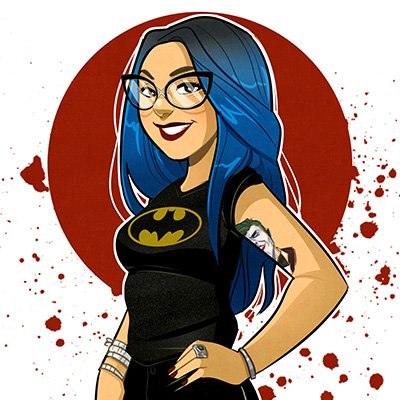Jay Baruchel, Canadian darling and purveyor of comedy, has delivered some of the best writing and acting for big and small screens alike.
For his sophomore film as director, Baruchel took on horror. Working alongside writing partner, Jesse Chabot, he adapted a comic book to create his horror feature, Random Acts of Violence. With his film coming to VOD July 31st and streaming service, Shudder on August 20th, Baruchel hosted some roundtables to chat about it. CGMagazine joined some other journalists to chat with Baruchel about his horror influences, his experience in the comics industry and how his upbringing and ever-changing sensibilities created the living document that became the script for his first scary movie.
You talked about the current state of horror and how it’s becoming stagnant so I was wondering if you could elaborate a bit more on that.
Oh gosh, yeah fair.
I guess as a fan of the genre. I find myself just barely scared by anything that I see. Rare is the horror film that is a good movie and actually scares me. I just also kind of developed a bit of a distaste, a personal distaste, for this idea of what a horror film had to be. Basically ten to fifteen years ago, a bunch of investors realized that they could put a little money into something that would make them a bunch and then all of a sudden we had this whole rash of contained genre films, which are very transparent in why they were created. For me, it’s an art form that is terribly important to me. I cannot separate my love of cinema from my love of horror movies and I think, when it’s when it’s at its best, it’s a very pure, very direct art form, and it lends itself to some pretty special stuff. So I just went out and tried to make the movie that I wish was out there.
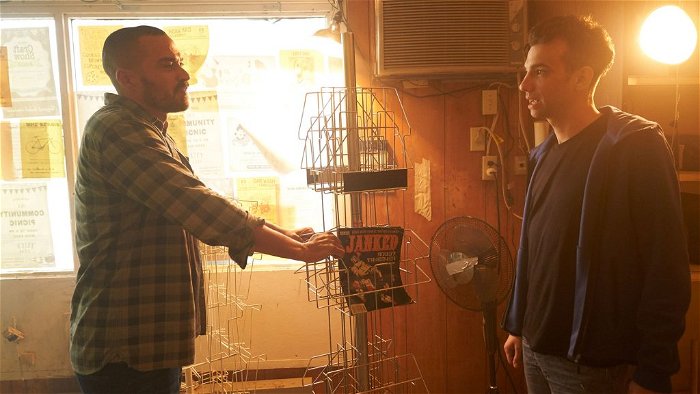
As an actor you’ve worked with the biggest directors in the world like David Cronenberg. I was wondering if you could share some advice or attitudes that you’ve taken from the method of your work with them.
It’s this lovely absence of anxiety and chaos that seems to be the industry standard on most sets and it was very important to me to do what they did, which was have a set that everybody likes showing up to. To know that we might have it in two to three takes, but we never want to belabor anything and that was something Eastwood and Cronenberg shared in common. Then also getting to work with Ben Stiller on Tropic Thunder and watch as he developed the script for over a decade and got it to a point that he was really comfortable with, and yet he still left an opportunity for all of us to create on set on the day. Those three sets are real inspirations for me.
As an actor, people are often asked in interviews who they want to act alongside but they don’t really give the director standpoint a lot of focus. Now that you’re making a name for yourself behind the camera, who are some of the actors you want to work with from a director’s point of view?
Oh, wow, what a cool question. They’re all too cool for me, I suspect. But if I ever got the chance to direct Val Kilmer, I would be able to die a happy man. Obviously you can do a lot worse than Daniel Day Lewis. I got to act alongside Gary Oldman. Getting to direct him would be a dream.
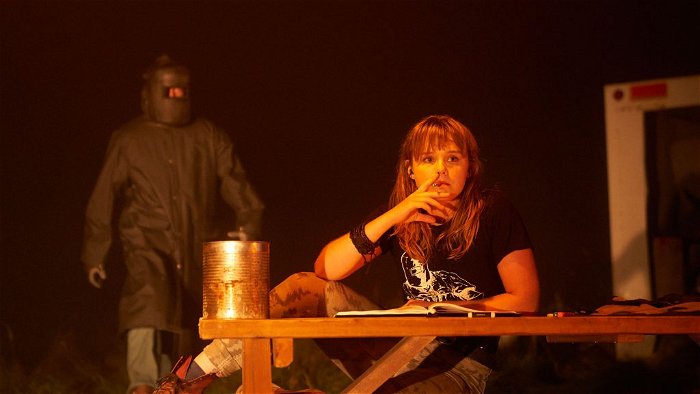
So you mentioned earlier not being able to separate love of cinema from love of the horror genre, but there’s often a fine line between comedy and horror. How you go from movies like the How to Train your Dragon series and Tropic Thunder to something as dark as your film here?
It comes down to being very proud of and honored to have the acting career that I’ve had. But that’s like, you know, what I do for living. I hate saying that because inherent in that, it sounds like I’m dismissing it to a degree, which I really am not. I have been lucky enough to live off of my acting for quite some time, and as a result, I’ve gotten to be part of some pretty special films. But the movies I was watching at home and the stuff I was reading and everything I was so interested in myself has been pretty much consistent the whole time. I was always interested in and a fan of horror movies and action movies, and always reading a shitload of true crime and, so for whatever reason, I was just always interested more in strong medicine as an audience member. So I knew that if ever I get lucky enough to get the chance to, to create and articulate a vision in the movies, it would probably be something like that. The movies that I’m in and the movies that I watch are sometimes different than that.
One of the things that comes up within the film is this idea of the balance between horror as an art form and fetishizing evil. I was wondering what you think the differences between those is.
That’s a really good question. I think it’s a question that we don’t necessarily provide a clear answer to, which is deliberate because I think there’s some stuff which the film takes a specific moral philosophy and standpoint on, but there’s other stuff that is more contributing to a debate and a conversation that I feel should happen. That being said, there’s movies that I watch, and I know in my heart of hearts when something feels truthful, and when something feels fetishistic. I point to a Quebecois movie called, in English, 7 Days, and that movie is really harsh. It’s just one guy torturing another guy in a room basically for a whole fucking movie and great degree of realism and versatility and then some. It’s a fucking harsh watch, but never once does it feel cheap or false. Never once does it feel like a love letter to violence and it doesn’t seem to be wallowing in it . I think, to answer the question, I think it’s kind of hard, this almost amorphous thing that we call truth. I think that you can tell when something warrants its aesthetic and you can tell when something is, I feel, I think you can, tell when something is ugly for the sake of ugly. But again, I think it’s a terribly relative thing. Because every single one of us watches the same movie, we’re each going to have some different reactions to it. So that would be my instinct is that it speaks to more than the truth behind it; why 7 is important and why a lot of other movies of about a serial killer aren’t.
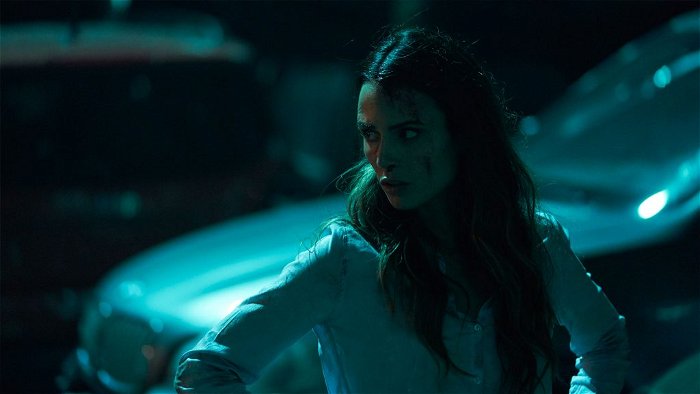
The last question, they were talking about how they don’t see this as a love letter to serial killers and violence, but I saw it as a love letter to Italian horror. I saw a lot of influences from, 70s Italian horror. I just wanted to know what other influences you put into the direction of it.
I definitely think there’s some degree of Giallo in the movie’s DNA. I think when you see that, you’re seeing a lot of Karim Hussain’s (cinematographer) influence, because that’s an era and genre that’s really important to him. And, you know, for me, I think there’s some really obviously important and beautiful stuff to be taken from it, but I’d be lying if I said it was like my go to. However, I saw ways that aspects of it would work pretty well in our flick. But for me, the other big influences would be The Red Shoes byPowell and Pressburger, a British film from the 40’s, of a ballet dancer which is not remotely scary in a horror sense, scary in a different sense. Most people don’t call that film scary, but it’s just weird and it there’s an energy to it that I can’t put my finger on, but I knew it was right for this movie. And then I’d say the two films that informed the energy of the violence in our movie the most would be Irreversible and David Fincher’s Zodiac. Those both have an approach to violence in a super honest, realistic way that allowed it to be clumsy and sloppy and really gritty as a result and so those are our big inspirations.
You adapted this film from a comic book. I was wondering if you could talk to me a bit about the idea of bringing a comic book to screen how you did, the art and how you use it in the movie, and how your experience with Captain Canuck lent to that.
Oh, awesome. Yeah, for sure. Well, thank you. It really starts from there being a really interesting story and interesting starting view points in the comic book. It got stuck in Jesse’s (Chabot, co-writer) head and in my head. Then, at a certain point, it becomes the only thing that matters is serving the story as well as we can. At a certain point, we allow the document we’re creating to start to live its own life, which means it’s beholden to source material, but only to a certain point where there lives a moment where the movie starts to want to be something of its own, and you have to kind of decide, “is this thing that it wants to be that is different than the comic? Is it worth doing?”
In terms of the aesthetics, I think subconsciously, we wanted it to look like that. But I think more than anything, I went in with our camera and our lighting and our color palette, it was more arch. We wanted really strong arch colors and light and shadow and that happens to be how a lot of comics are created and so it ends up looking like that.
In terms of what is my experience with Chapterhouse and Captain Canuck, I knew exactly what it would be like to be on a comic con tour and the headaches that the owner has to look forward to arriving at a venue, so there’s some bit in the movie where I’m yelling at the guy who owns the comic book shop about a fucking box that he can’t find that he sent and that’s like the shit that seems to happen at every comic con, and that seemed to be a bit of a comic industry banality that could be something funny and real. So I definitely took some of my years in admin in that world, it definitely informed vibes this movie.
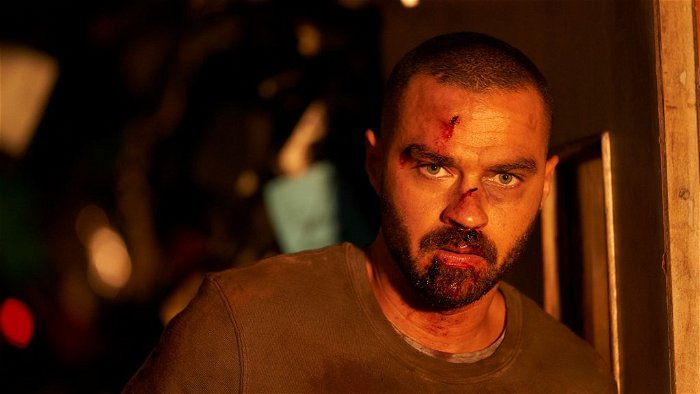
This movie sets up two themes that are opposites of each other. One is the autograph signing that features fans who are a little too into the Slasherman comic. Later in the film, the police interrogation where the officer’s expressing great disdain towards the comic. How do you feel the scenes comments on core culture of horror as a whole?
That’s the thing I think I wanted to show, that we’re trying to try to talk about. It’s an inherently relative experience as an audience member consuming a work of art. But also, I was trying my best to show every bad thing that can come from this. It’s more about this idea that one can divorce oneself from responsibility for anything one puts out into the world, which I think is as absurd as the concept that video games and comics make people kill people. I think those are both two very facile, silly, absurd philosophies. How those two scenes complement each other is, it’s like, this is what it can look like. It’s like, when you’re caught in something that you’ve looked the other way on, when Todd has made a Faustian bargain, even if he thinks, ultimately, that his book is victimized by critics, part of him, as a rational man, has to agree with at least part of what they’re saying. He knows, ultimately, that even if he believes his work has more merit than some people seem to believe it does. he knows what his fanbase looks like. He knows, ultimately, how it will come across in the cold light of day. It’s about the specter of responsibility that he was able to keep at arm’s length getting closer and closer to him until the end.
As a horror fan, I was really surprised by the names of the actors you chose because every one of them is known from big horror movies and, did you think of that when you chose the actors?
No, not at all actually. You’re totally right. And that was something we realized after we had our company together. It is the hokiest, corniest answer possible, which is; I just met with them and I knew they were the the right people to play these characters. I had met with a whole bunch of actors, and was lucky enough to get some really good conversations with some really good actors. But the only time that the light bulbs went off for me was in chatting with Jesse (Williams) and Jordana (Brewster). It was about three to four minutes into a conversation with either of them and with each of them that it was apparent to me that I finally, after the better part of the decade, found my Todd and Kathy and then it ends up paying some kind of genre dividends later, when I’m like “oh, fuck, that’s right, Cabin in the Woods and Texas Chainsaw” and shit. But when I was meeting with them, it was just trying to find a way to make my paper characters flesh and blood.
With this film, along with Man Seeking Woman and Goon, you film in Canada often. I know George St. Pierre always said that he enjoyed fighting in Canada for a comfort level. What exactly is the thing that draws you towards shooting in Canada and is it particularly important to you?
It’s two things. One of them is what he said. This is my home, this is where I’m from and where I’m most comfortable. The other piece of it is, I feel like many could call a silly obligation to English Canadian cinema. I want to know, for better or worse, I contributed to the cinematic language of my country. I want to know that I added something to our cultural tapestry. It would have been more convenient for me to have gone elsewhere, potentially, but I know that, at the end of the day, even if I got to create some really special stuff, I would have contributed to another country’s culture and this is, for me, my great shame is that I never joined the army, if I’m being perfectly frank. That’s not a joke. That’s something that’s always haunted me since I was a kid. I didn’t do what a lot of my uncles, my granddad and my cousins did. This is not, please. I don’t mean to say that I am comparing this movie to what any of my uncles or granddad or cousins did during the army, but it is, in some way, that I can contribute and help and, and ‘cause, listen, countries come and go, but art sticks around. I would like to add to this country best as I can.

Earlier you touched on working in the comics industry a bit and you mentioned that you were saying that films have been similar throughout the years. What are some of your major horror film and comic book inspirations?
Alan Moore’s From Hell, I think is as good a use of the comic medium as has ever been created. I would also put Preacher, everything Ennis did for Preacher up there. Everything Ennis did for Punisher for the years that he did Punisher are really, really, really important to me. Then for horror flicks, it would be The Exorcist, the original Texas Chainsaw Massacre by Toby Hooper and John Carpenter’s The Thing. To be honest, I think still, The Exorcist is probably the scariest movie ever made. But I think what might be neck and neck with it as a movie people don’t think of as a horror movie, but I would argue that 2001: A Space Odyssey is probably the scariest movie ever made. I will spend my life trying to recreate even a moment from that film.
You mentioned Preacher and The Exorcist there and I wanted to ask you, there’s a tonne of religious imagery used in this film. I was wondering why you chose to use that and why you hate Christmas? No, I’m kidding.
I am kind of a child of two cultures to a degree. My dad is Sephardic Jewish. First generation. My side of the world is Irish English, Scottish Canadians and deeply Catholic and some of the most impactful, not necessarily the best, but most impactful moments in my childhood are tied to religion and Catholicism. Specifically and even Catholic school, from grade one through six, and I have hated myself the entire time as a result of this and I like to tell people that I was raised with two different but very potent forms of guilt from Jewish culture and Catholic culture. But it all seems to stem from- this is the best way I can say it: I remember my mom reading me the Bible when I was a kid and she got to the part on Noah, and I started bawling my eyes out uncontrollably. Three years old, bawling my eyes out. Why would G-d (Note to B-Frye, Jewish people don’t spell out g o d in print so we write it that way) want to do this? Catholicism has a lot of beautiful stuff in it, but it is very, very deeply violent. You grow up going to church and in class and seeing Christ eviscerated, brutalized and it’s drilled into you. So it’s impossible for me to separate blood from awe because it was drilled into me from a childhood and from years and years and years in church. My relationship with the church is still kind of like a weird, tenuous one. I reject most of it, and yet, I still feel a degree of safety and comfort when I’m in one. So there’s a push and pull in me, that finds its way out and manifests itself in this movie.
I was very happy to actually see after watching the movie that my long-time friend Anthony Fantastic did the art. He told me some of the furniture is his.
There’s a whole bunch of his shit in Todd and Kathy’s apartment. I think that’s Tony’s workstation in his apartment.
I know Tony as a musician, how did you come across him as an artist and what was it about his style that you thought really directed what you wanted Slasherman to do.
He was a friend of my production designer, Michelle Lannon, who I’ve known through three seasons of Man seeking Woman and then Goon: The Last of the Enforcers, so she’s somebody who I have a great affection for and she has a great respect for him as an artist, and so she came in with a really awesome team including her daughter, as well as Tony. Michelle knows really cool people. And that’s basically as simple as that. He came in and Tony showed me what he could do, and I was like, “Holy fuck, well, you could do a lot worse than that.” I wanted everybody, whatever little bit of playing field they were in charge of, I wanted them to be the master of it. I didn’t want to fuckin breath down Tony’s neck and I didn’t fucking need to either. I just wanted everybody there to create with reckless abandon relative to the department they’re in. It ends up being this, hopefully, neat passion project not just for me, but ideally as many people involved as possible. Listen, Tony’s contributions to this film are sincere and profound. And, and yeah the movie isn’t the movie without his artwork in it.

In this film, it seemed like you wanted to subvert some horror tropes. I’m not sure if that’s something that you guys added organically or if that came from the source material. Can you chat a bit about your approach to horror tropes and why you were kind of kicking them a bit?
Yeah, for sure. Your work should reflect what you actually believe. Even if we enjoy sort of, on a surface level, your standard type of slasher film, that scratches a certain itch for us. We’re also able to discuss and talk about why is this maybe is not the best and is potentially irresponsible and all this different shit. It’s just like, the point of something is, a conversation that Jesse and I always get into. I think we were lucky enough to have known each other since high school, but also the high school he went to is a fine arts high school. So this concept of, “you know, what, what is the point?” And ,“why does one do this?” And, “what does this mean?” This shift that was drilled into us. Of course, when we started writing this thing, our intellects were commensurate with our age, and in time passing, we evolve ideally and that document should evolve along with us. So at every year that the movie didn’t happen, we go back to the document, open the hood up and be like, “okay, how can we make this better?” And, read through like, “well I don’t think that way anymore,” and, “Holy shit this is a bit exploitative,” or, “this is thin and this is kind of shitty.” The dialectic in the film is a conversation Jesse and I had about our script over the course of a decade and we realized that it would be the most honest truthful way to do it, to actually not just let that conversation inform how we write the thing, but to actually put it into the movie and almost build the movie a bit around it.
